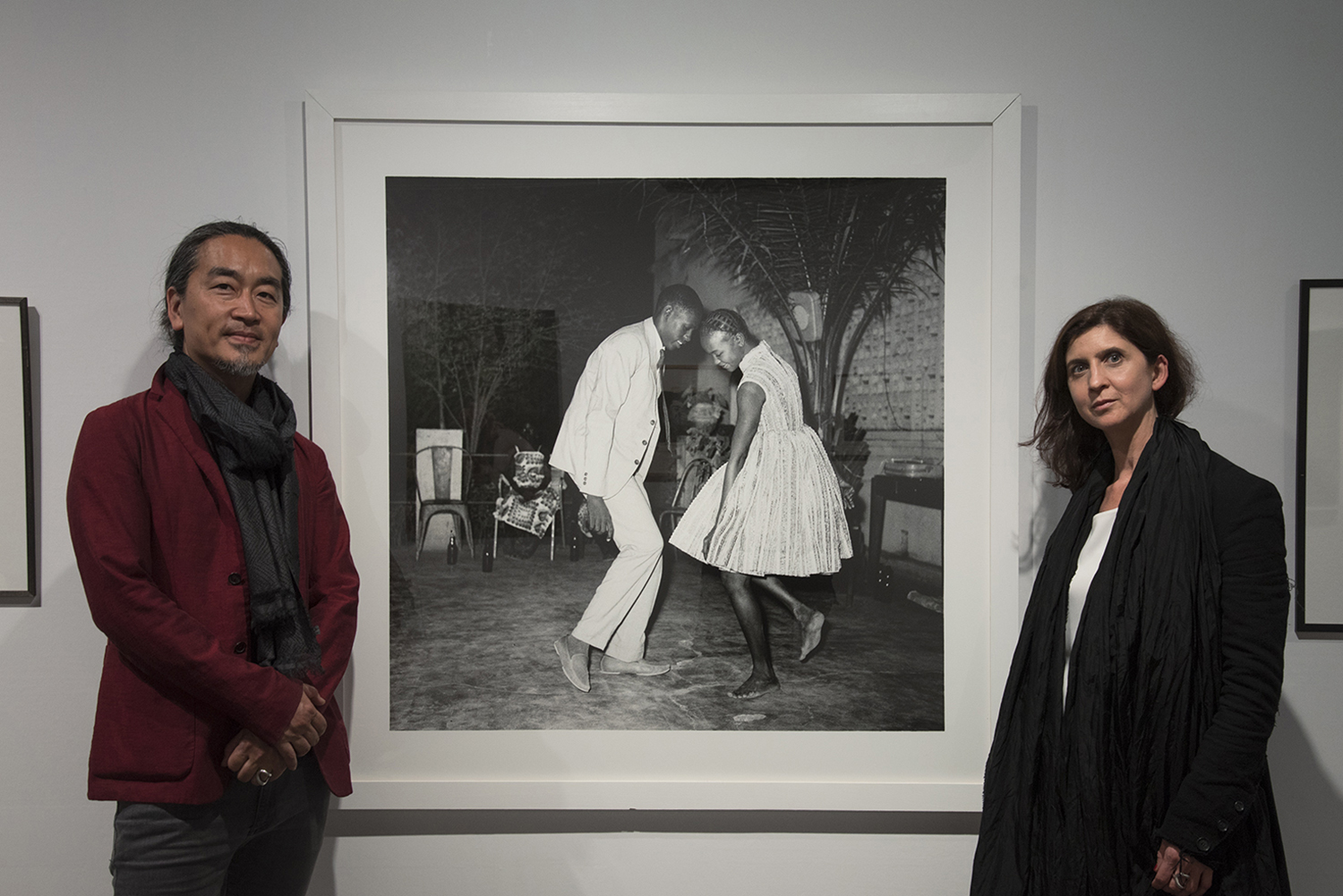Shows
Highlights from Kyotographie 2017

Every year during the seasonal period of cherry blossoms in bloom, Japan attracts a high number of tourists from around the world who photograph and capture the awnings of delicate peach, pink and white sakura that cover streets and parks around the country. Around the same time, the annual Kyotographie kicks off in Kyoto, one of the most revered cities in Japan for some of the country’s historical crafts such as pottery and handcrafted kimonos. Co-founded by French photographer Lucille Reyboz and Japanese lighting artist Yusuke Nakanishi in 2013, Kyotographie is a festival dedicated to celebrating photography, and sprang from a need for cultural exchange after the devastating Tōhoku earthquake and tsunami in 2011. Fulfilling that need, in just five years since the inaugural edition, Kyotographie has received acclaim and recognition for its significant contribution to the development of the contemporary art form.
For Kyotographie’s fifth edition, 16 exhibitions, featuring 30 artists and collectives from nine countries, came together under the curatorial theme of “Love.” A diverse range of relationships—between individuals, lovers, families, societies—were illustrated by renowned photographers including Arnold Newman, Robert Mapplethorpe and René Groebli, together with emerging artists including Yan Kallen and Akihito Yoshida. Venues of the exhibitions were spread throughout the city, mostly within walking distance of each other, from an Edo-period castle to shrines and traditional Japanese houses. Visitors were invited to explore the ancient heritage of the former capital of Japan while strolling through the now-modernized city.
Energetic co-founders and directors Lucille Reyboz and Yusuke Nakanishi started Kyotographie in 2013 as a way to bring international attention to Japan’s thriving photography scene, while promoting a strong community of artists from around the world. As the festival wraps for the year, Reyboz chats with ArtAsiaPacific about the uniqueness of the event and the satisfaction that comes from seeing Kyotographie’s featured artists succeed beyond the festival.

What many find interesting is that both of you are artists. How does this help with the success of the festival?
Working with the artists is one of the most delightful parts of the event. It’s sometimes quite challenging to invite them to show their work outside of the white cube format. The venues we use present a lot of limitations so we usually engage in lengthy discussions with the artists to figure out the best way to show their work. Of course, being artists ourselves allows us to connect directly with their ideas; together we are able to find solutions for complex problems. It’s a real collaboration.
The festival is embraced by Kyoto, and you use structures all across the city for fascinating site-specific presentations. What are some of the most memorable sites?
In 2015, we constructed a temporary building designed by [Japanese architect] Shigeru Ban in front of the City Hall, made of recyclable paper. This type of structure had never been realized in Kyoto's history. It was a real feat, and we were very excited to show his work in this setting.
There are several events surrounding the festival, outside of the actual exhibited art. One of these is the International Portfolio Review, which is in its third year. How did this come about and what has the feedback been like?
We started the review to offer more opportunities for photographers. It was also a way to connect Japan with a large international community of photography professionals. Each year, the festival invites so many interesting and influential people to Kyoto, so it was a shame not to expand upon their experiences and insights. The festival has turned into a big production. We have a prize [the Fujifilm Award] and a party associated with the review. People come from all over the world to participate. We are proud of its growth. It’s so nice to see reviewers talk about whom they saw, and to find out that professional opportunities arose from the event.
Tell us about the master classes you offer. This year, you featured Zanele Muholi and Isabel Muñoz.
Each year, we develop an education program for the same reasons as the review. The master class is another way to engage with photographers of various levels and to offer an education that is not usually available. Hosting an event with Isabel Muñoz and Zanele Muholi was something really special, and not just in Japan.
Who are some of the emerging Japanese photographers you find most intriguing today?
There are so many emerging talents in Japan; it’s difficult to provide an exhaustive list. Among the most intriguing emerging photographers in Japan are those we have shown in past and present editions of Kyotographie: Akiko Takizawa, Yusuke Yamatani, Eriko Koga, Akihito Yoshida, as well as many others in our satellite event, KG+.
What has been the greatest achievement for the festival so far?
Making it to being five years old with less than two percent of government funding! And, of course, creating new opportunities for the artists we exhibited—welcoming them in Kyoto for a residency to create a new body of work or putting them in contact with other festivals or famous institutions. This is real satisfaction!
Interview conducted by Peter Augustus.
The fifth edition of Kyotographie takes place at various locations in Kyoto until May 14, 2017.
Jessica Keung is photo editor at ArtAsiaPacific.
Peter Augustus is associate publisher at ArtAsiaPacific.
To read more of ArtAsiaPacific’s articles, visit our Digital Library.







